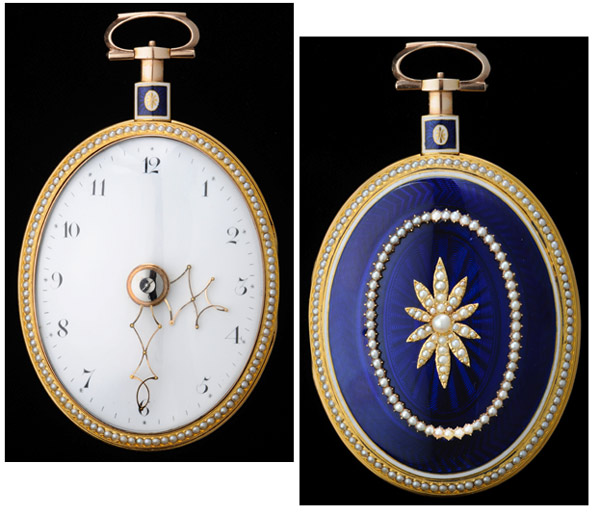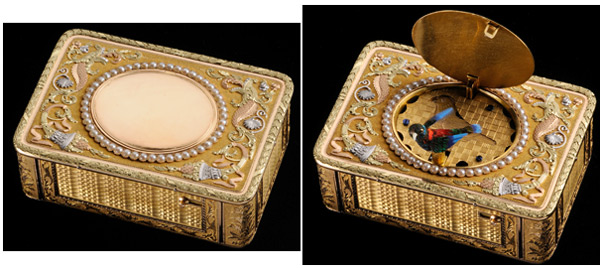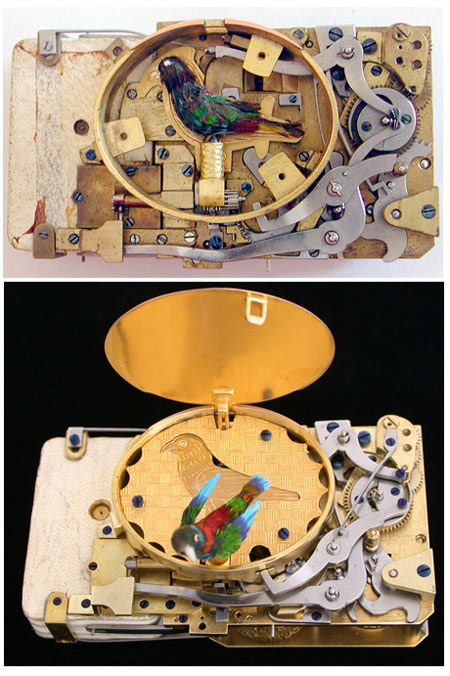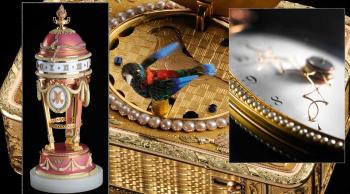The restoration and preservation of watchmaking heritage represent the very foundation and origins of Parmigiani Fleurier. Its expertise dates back to 1976, when master watchmaker Michel Parmigiani opened a restoration workshop. In 1996, the Parmigiani Fleurier brand was created around this centre of excellence.
Restoration involves returning an object to its original condition. In order to do this, Michel Parmigiani has set himself apart by creating his own methodology, a constant balance between ensuring the mechanical functionality of the creation and preserving the expertise of the past. But by studying masterpieces from the past, he is also able to find his own solutions to the mechanical and technical challenges faced by master watchmakers throughout the ages, and to use them in the Parmigiani Fleurier watches of today.
The initial task of the restorer is to observe an often unique item - within which lie many mysteries - over a period of a few days. The restorer looks for parallels, scouring scientific works, museums and collections before opening the piece, whilst making sure to document it all. He or she must understand the subtleties of the mechanism just as much as the techniques used. The restorer should also have knowledge of numerous arts such as precious metalwork, enamelling, engraving/chasing, gilding and glasswork. Preservation involves a long and patient cleaning operation, which can sometimes uncover new secrets, for example a previously hidden inscription. Restoration, during the reassembly phase, involves adopting reversible solutions, whilst ensuring the original remains the same.
The Parmigiani Fleurier restoration workshop is a department that deals with all types of horological objects. Three small automata from the Maurice Sandoz collection serve as fine examples of masterpieces restored by Michel Parmigiani.
The Yusupov Egg
The Yusupov Egg is a watchmaking masterpiece produced by Carl Fabergé in 1907 and belonging to the Edouard and Maurice Sandoz Foundation. Restored by Parmigiani Fleurier, it was originally given by Prince Felix Yusupov to his wife, Zinaida Nikolayevna Yusupova, as a gift on their twenty-fifth wedding anniversary.

The piece comprises a watch movement inside an egg. The egg sits on a tripod, which rests on an onyx base. Made entirely from gold enamelled over a guilloché background, the piece is adorned with garlands, friezes and medallions in coloured gold decorated with brilliants, emeralds and rubies. It is topped by an urn decorated with flames.

Oval watch with articulated hands
Among the watches in the Edouard and Maurice Sandoz Collection is an oval watch with telescopic hands that inspired one of Parmigiani Fleurier's modern timepieces.
The oval watch with articulated hands dates back to around 1800. It is a pocket watch of English origin. The hands are designed to trace the elliptical form of the dial. A holistic approach was adopted for this timepiece, with the case, dial and time indicators all following the contours of the shaped movement. The bezel and case-back of this gold timepiece are edged with pearls. The back of this jewelled timepiece is adorned with a medallion of royal blue enamel over a guilloché pattern, with precious stones set in a floral arrangement.

Applying the knowledge gained while restoring this piece, Parmigiani Fleurier developed a modern solution for a similar display. It can be found on its Ovale Pantographe model, named after an instrument that operates using the same principle.

Snuff box with singing bird
Parmigiani Fleurier has drawn on its expertise to restore many pieces, including a snuff box with singing bird produced by Frères Rochat around 1820 and belonging to the Edouard and Maurice Sandoz Collection.

At first sight, the piece appears to be a 75 mm x 51 mm x 25 mm box designed to hold snuff. The materials used are all eminently precious, with the box made from finely engraved coloured gold to represent foliage, cornucopias and dolphins, and it has a compartment intended to hold snuff. Yet the piece harbours a secret. When the side button is pressed, the polished oval element edged with pearls at the top centre of the box is lifted, revealing a small feathered bird. It moves its wings, tail, head and beak as it sings a melody.
 faberge egg
faberge egg




